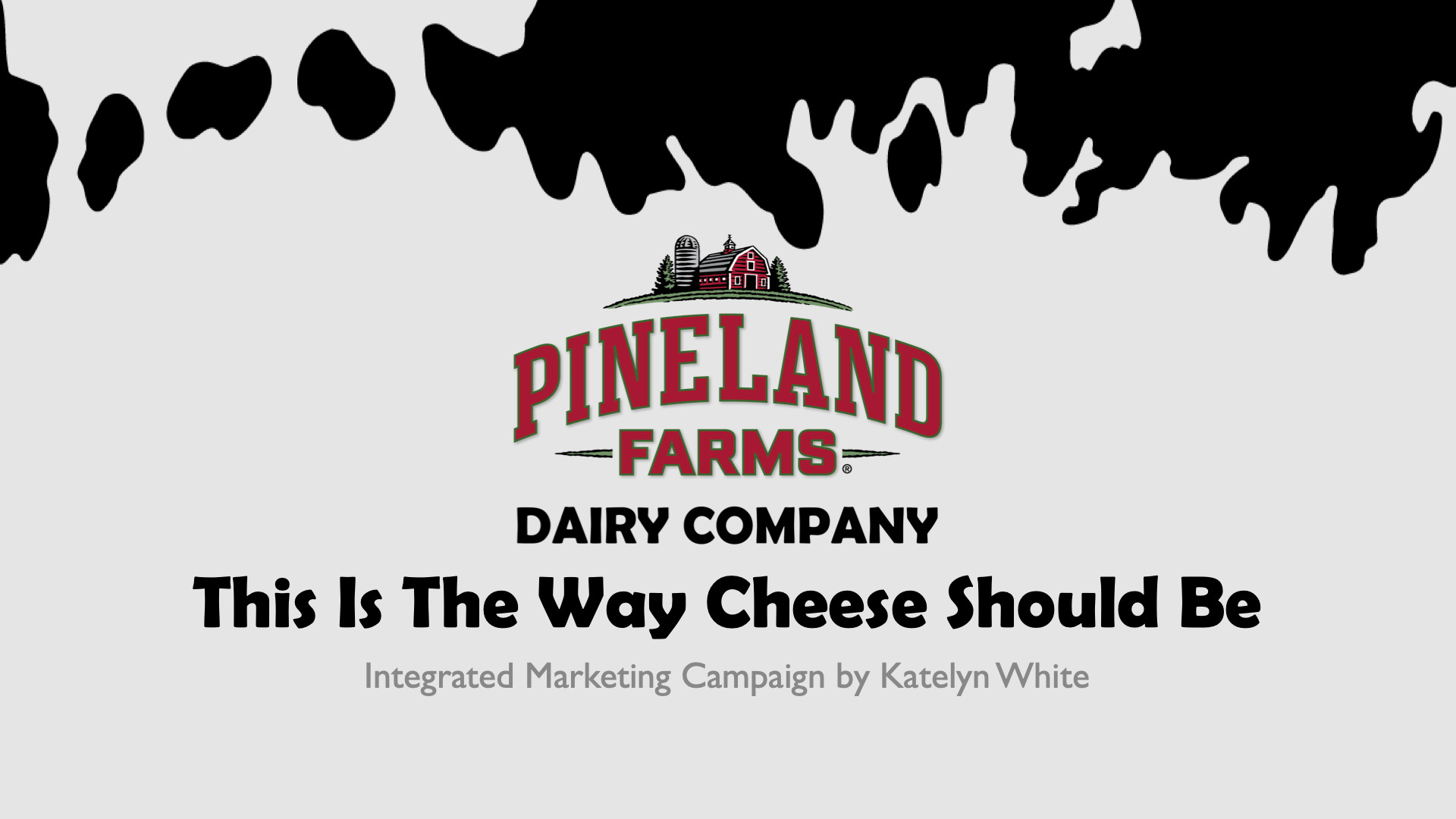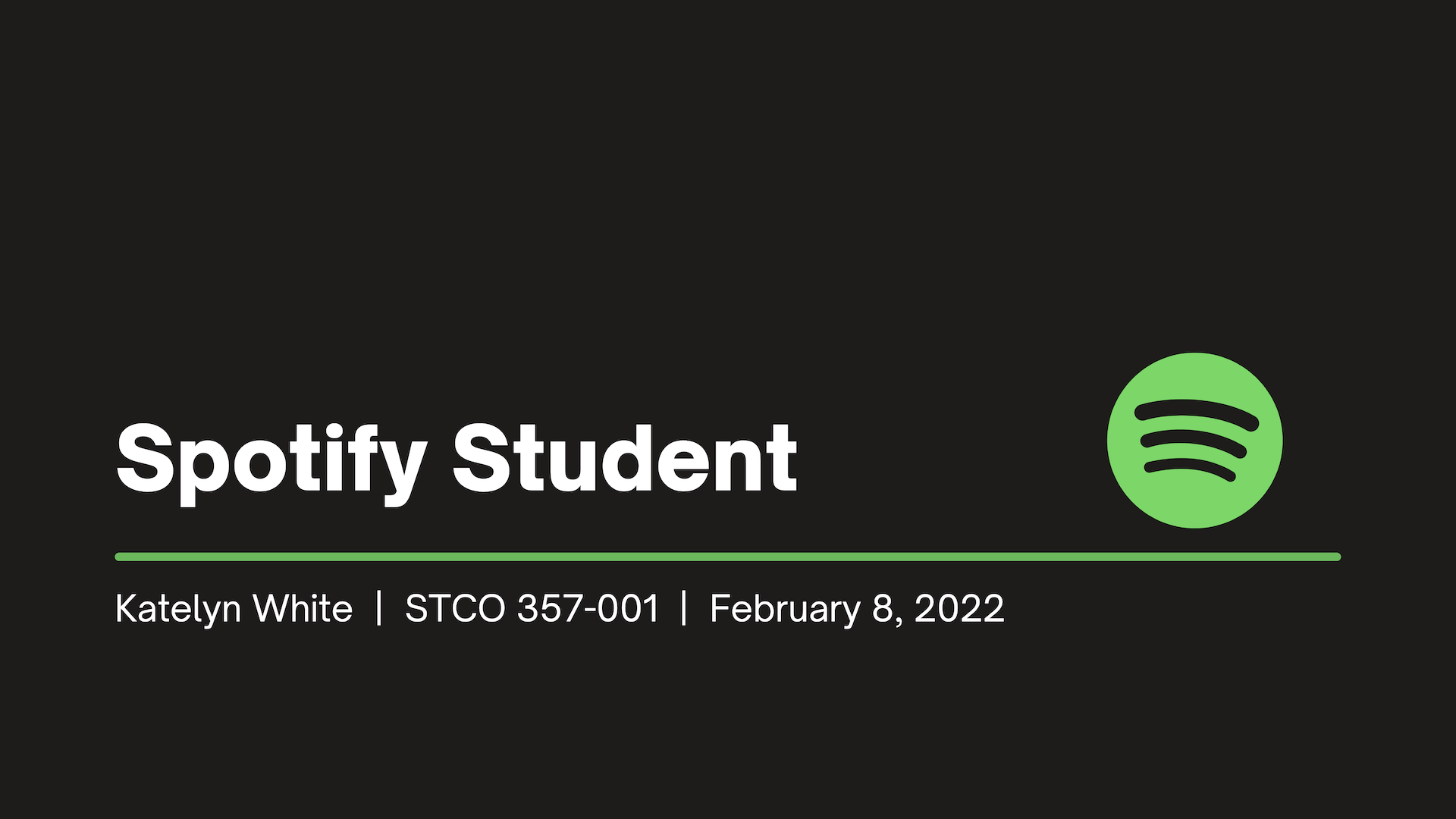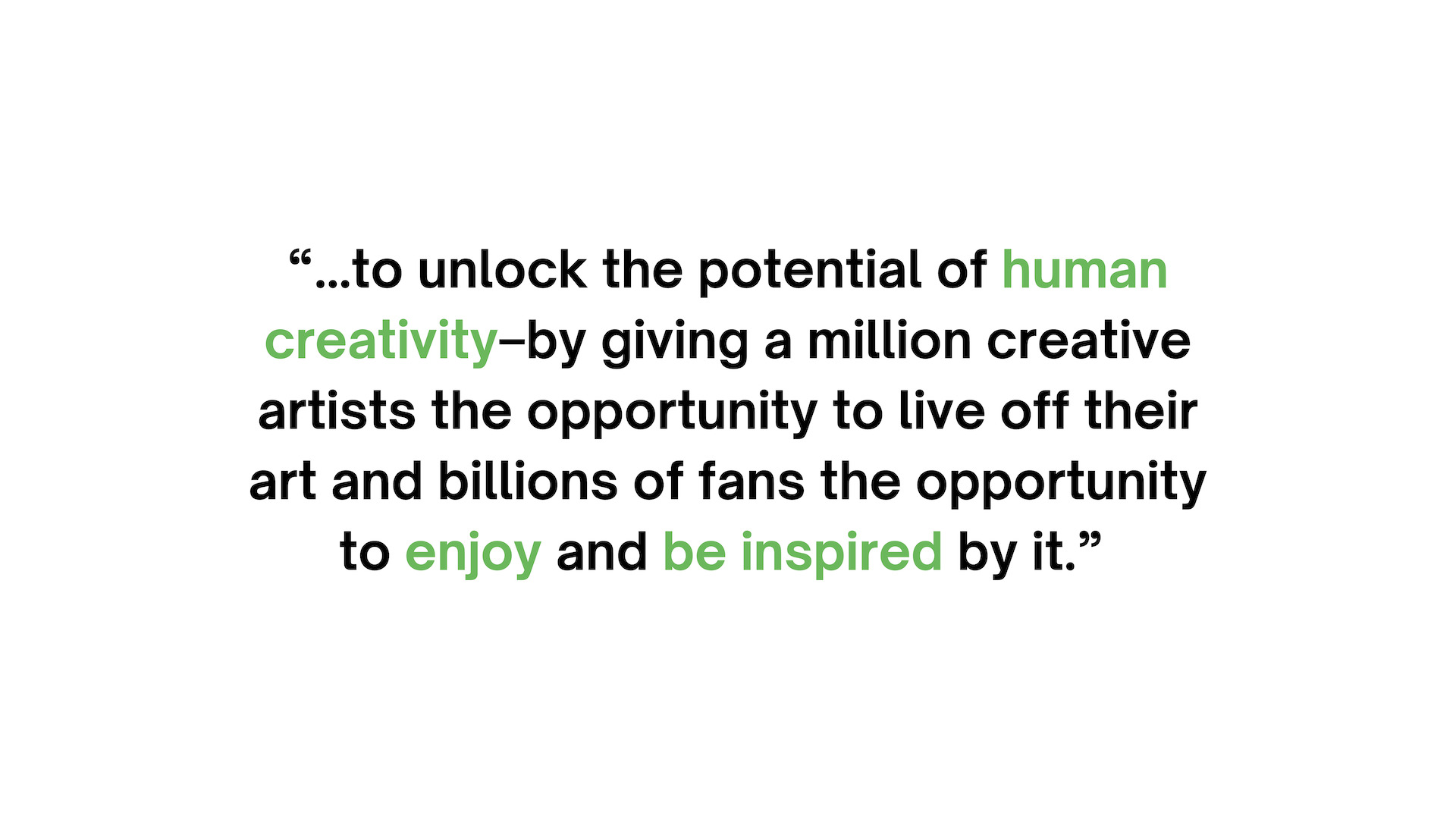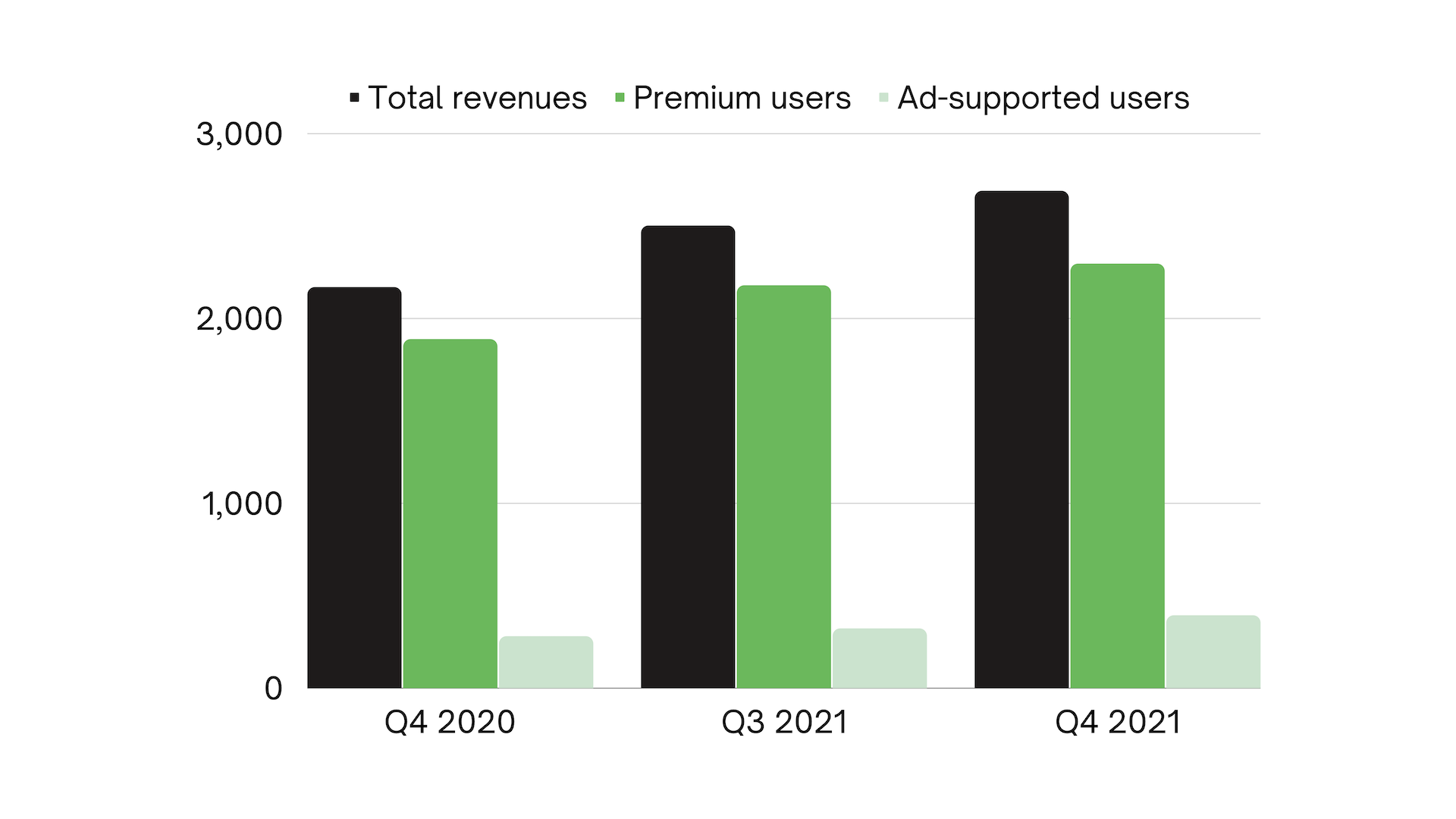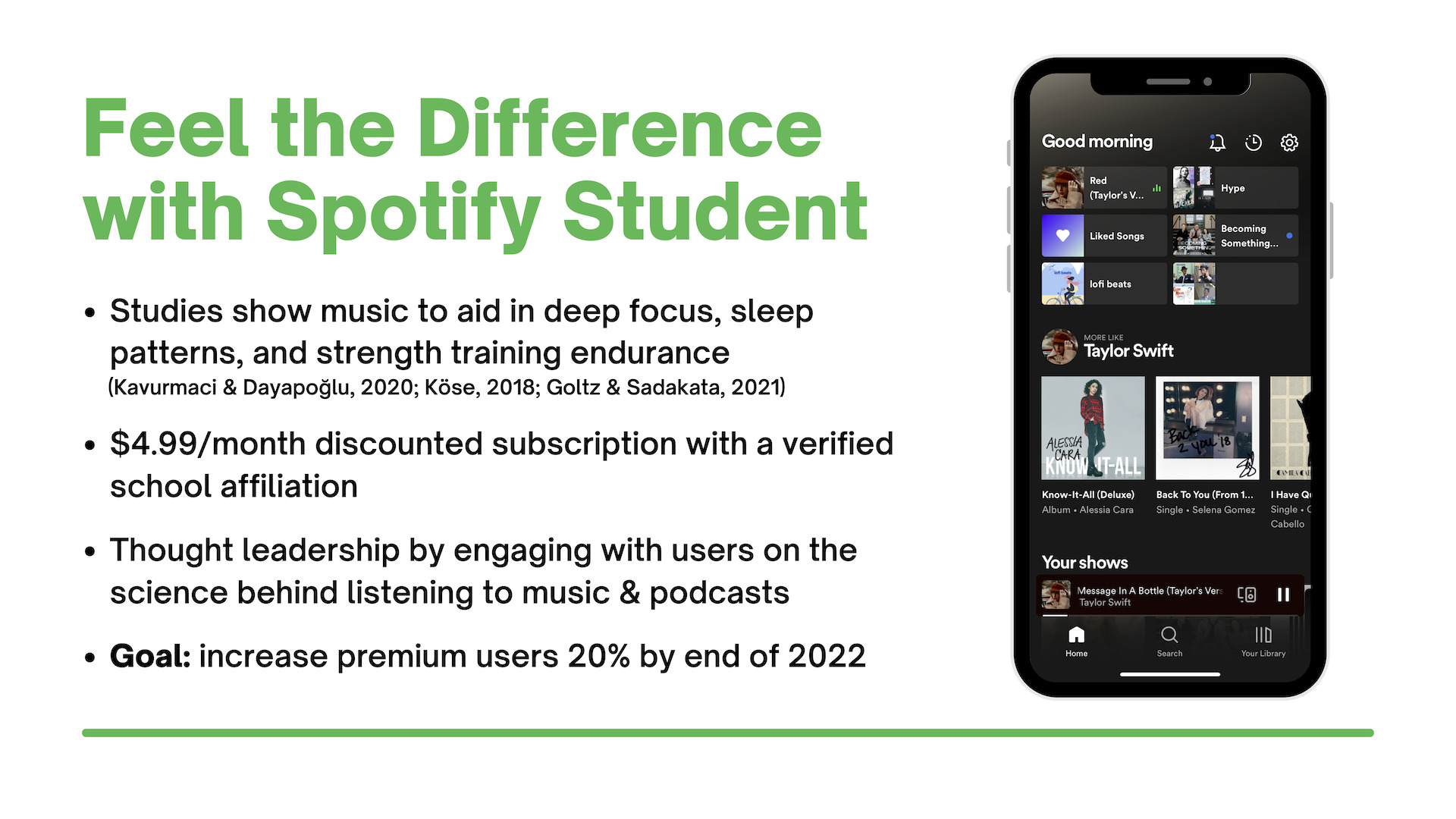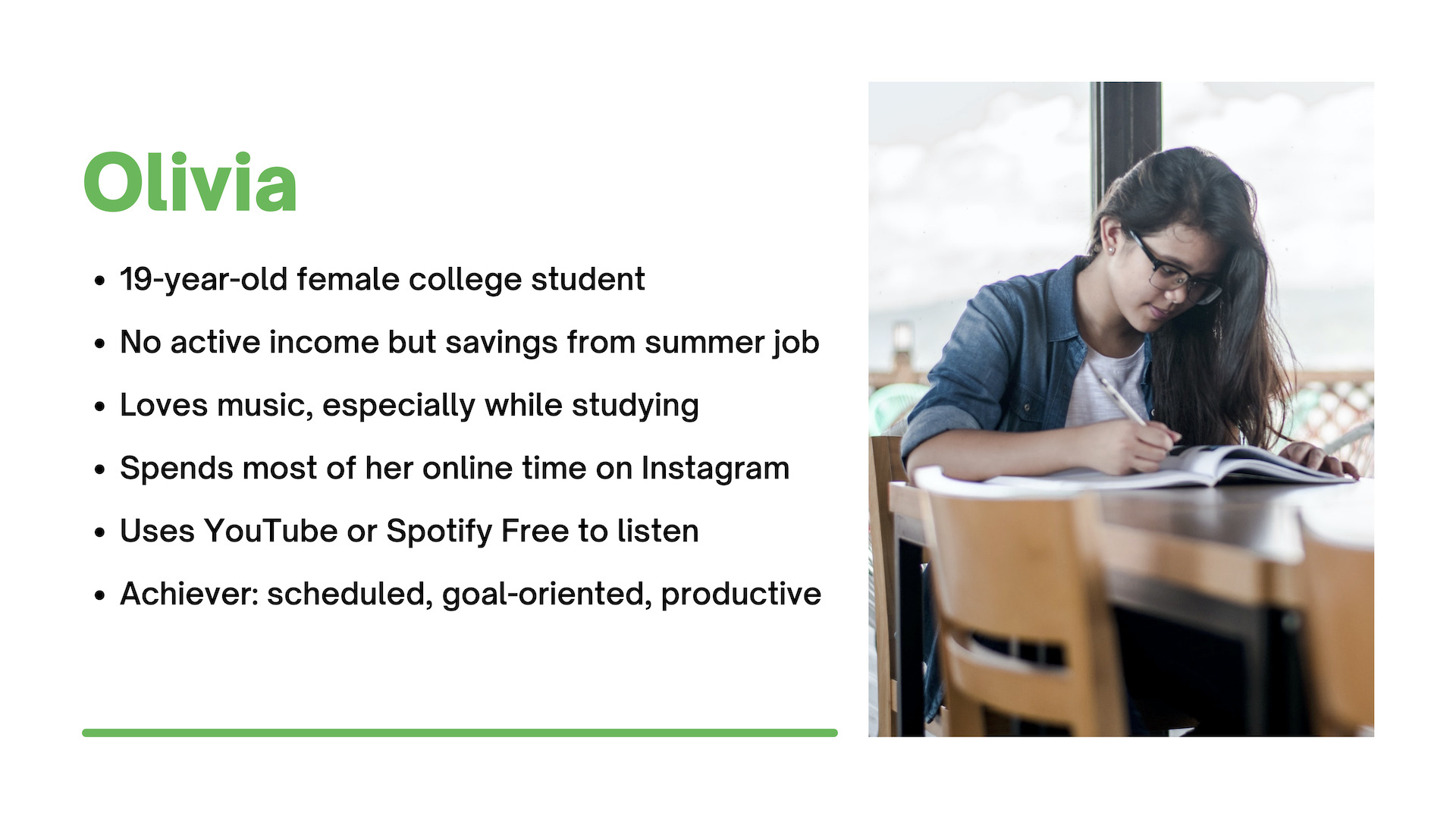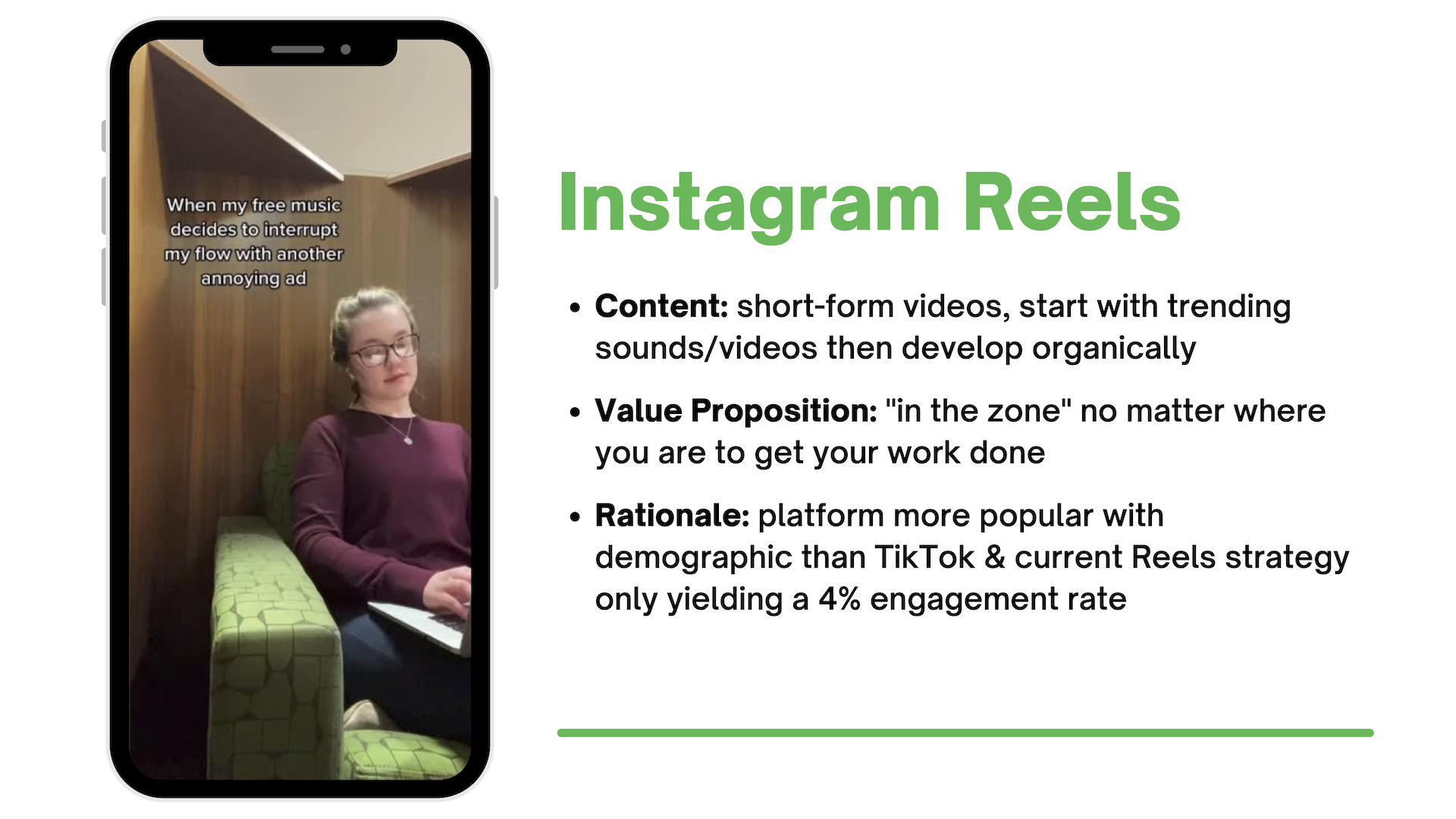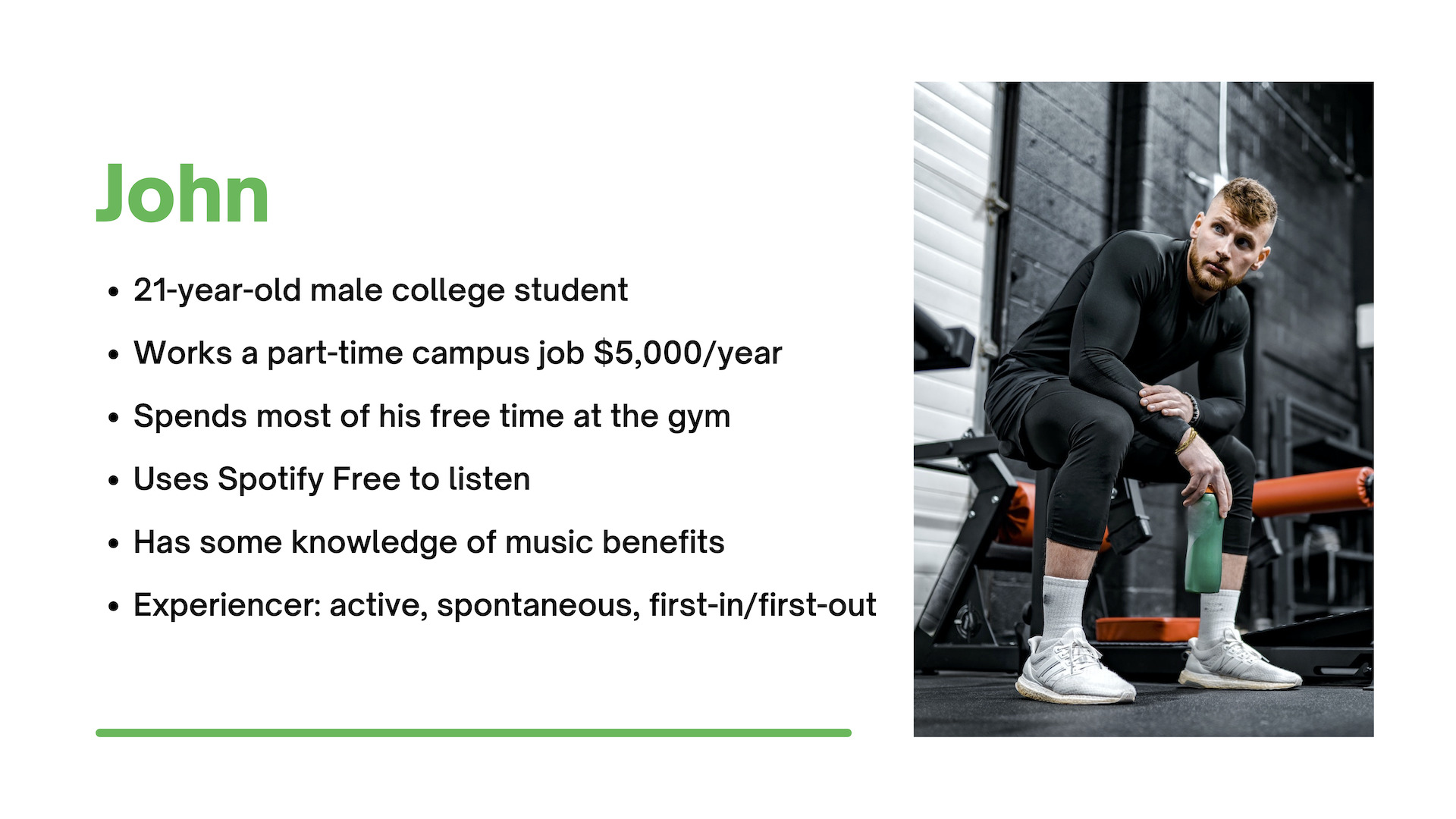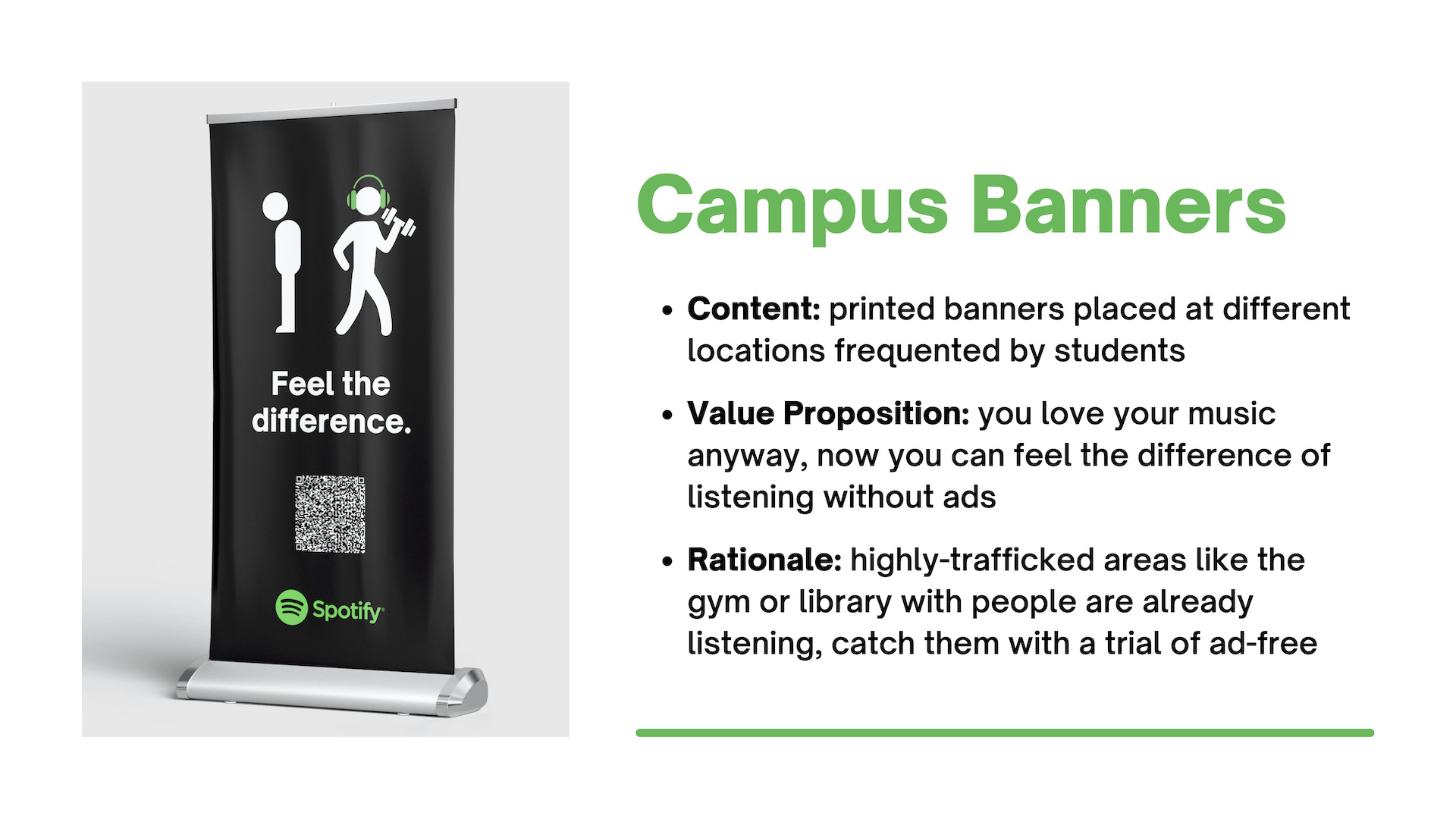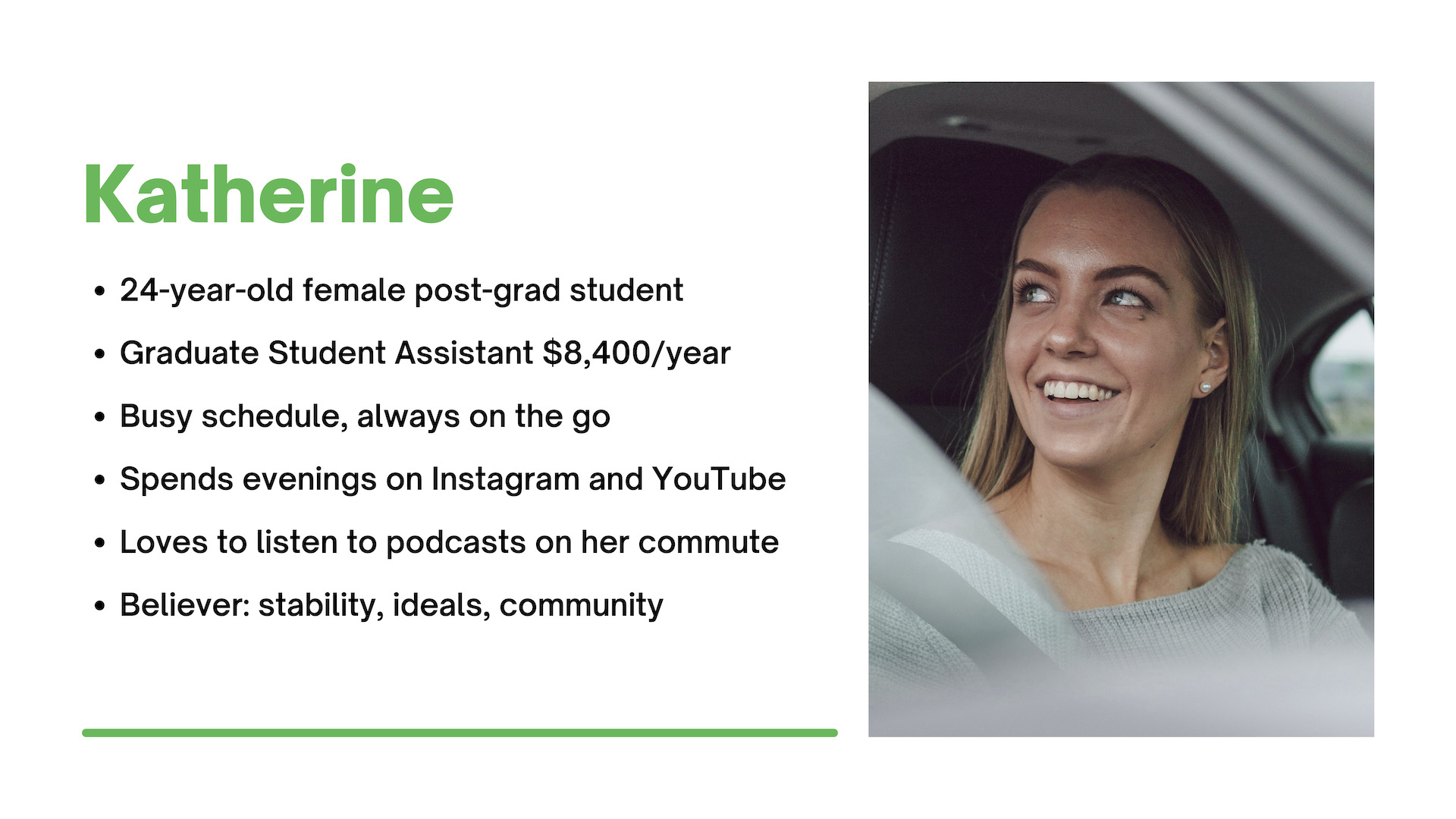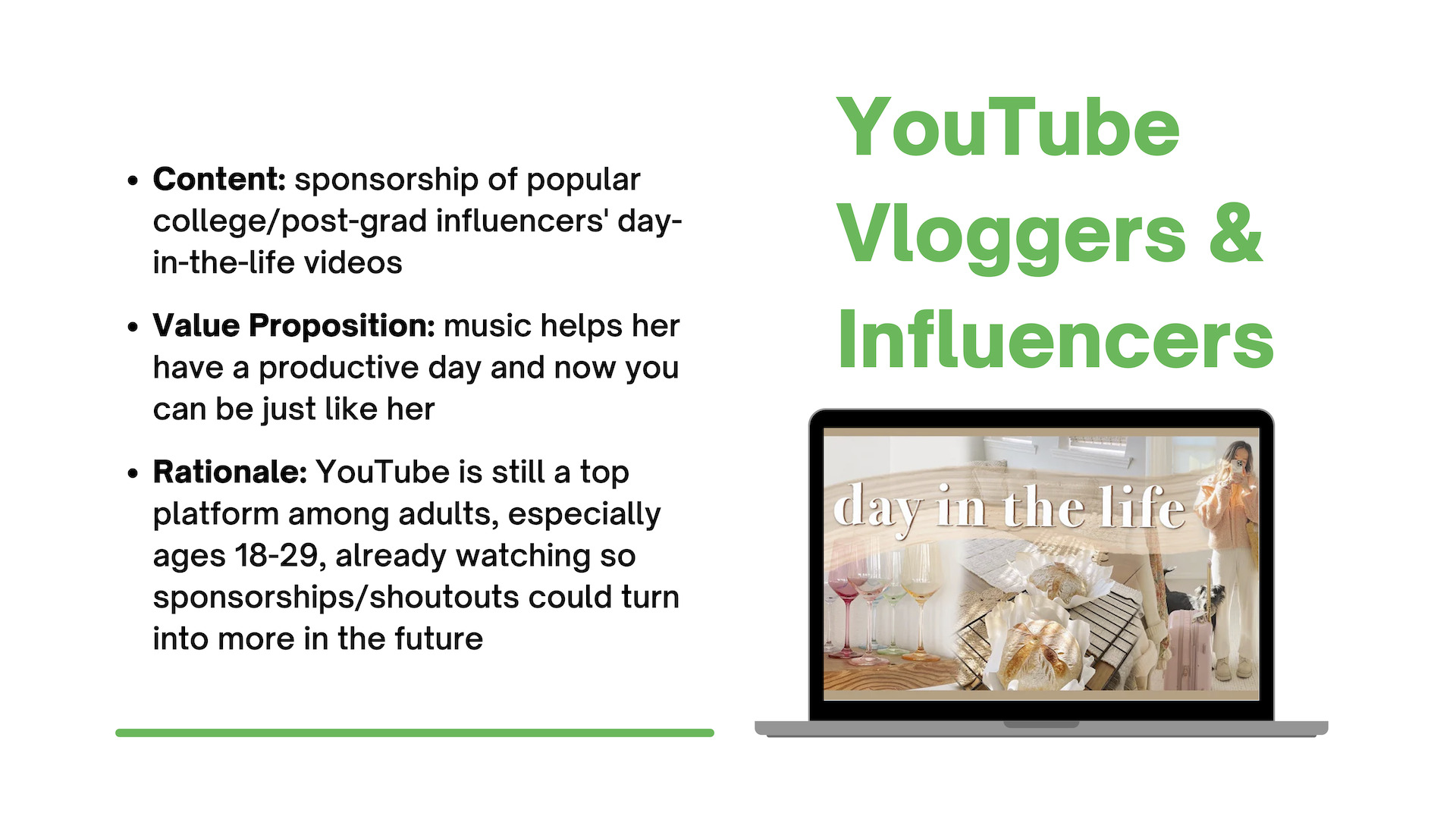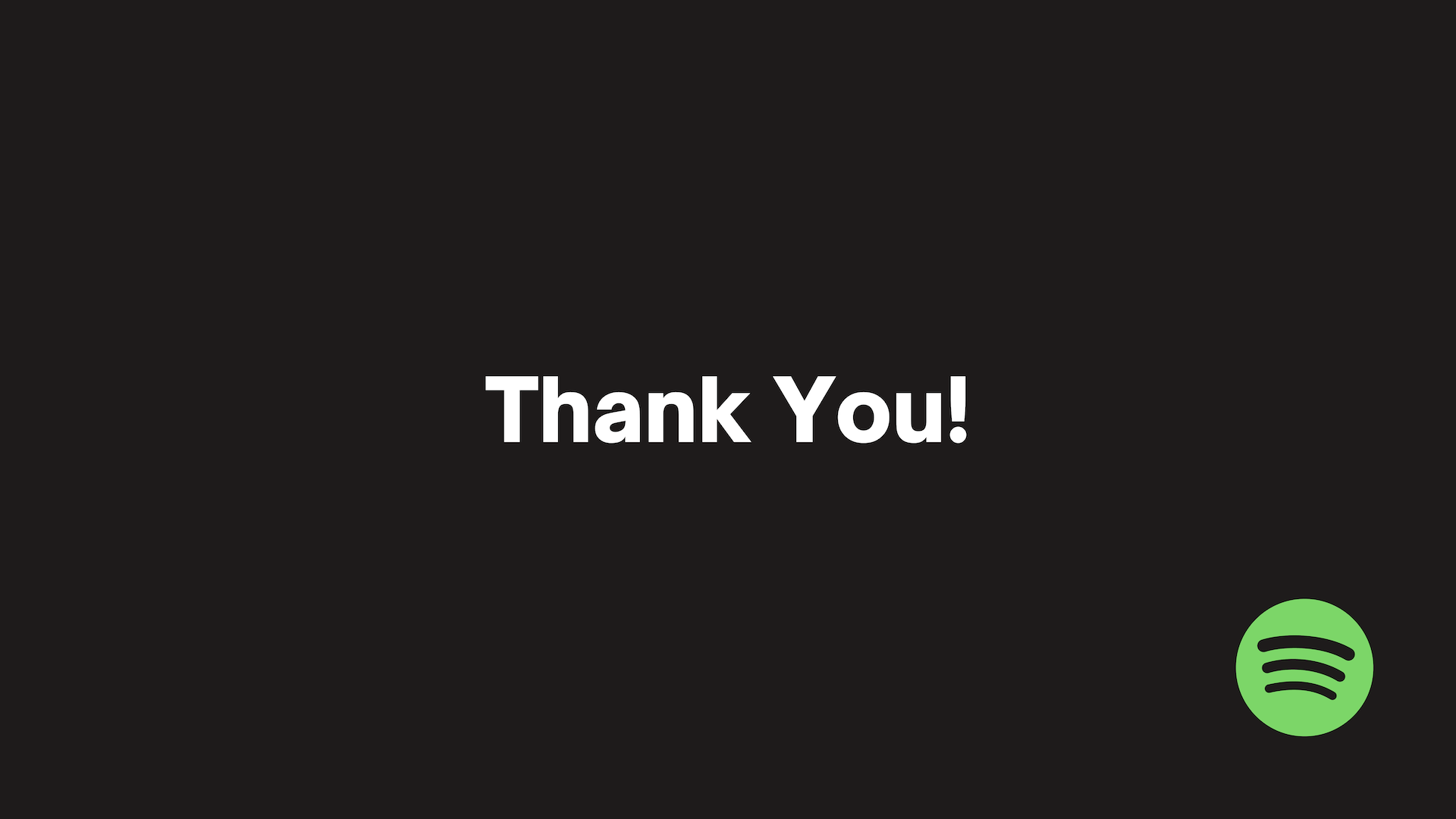Product Rollout Campaign
For my PR & Promotions class, I was tasked with creating a product rollout campaign for any company of my choosing. This product could be a current product or brand new one. I chose to examine the popular music streaming platform, Spotify.
Spotify Technology is a music streaming company that launched in 2008 with a mission “to unlock the potential of human creativity–by giving a million creative artists the opportunity to live off their art and billions of fans the opportunity to enjoy and be inspired by it” (“About Spotify,” n.d.). At the time of my project, Spotify lead the music streaming industry by holding 30% market share in the United States over competitors Apple Music and Amazon Music (Kennedy, 2021).
The final campaign can be viewed in the slider below. For more information, I included my rationale and references for the project below.
Introduction
According to its Q4 2022 shareholder report, Spotify supports about 406 million monthly active users (MAUs) worldwide, including 180 million premium subscribers (Spotify Technology, 2022). Premium subscribers account for more than 85% of total revenues for the company, signaling the importance of growing that audience for the company.
Step 1: Organizational Goals
A campaign to promote the existing Spotify Student plan will solve the problems facing the company and its customers. Premium users bring in almost 482% more revenue for Spotify than ad-supported users, and the number of premium users has been growing steadily over the last three years (Spotify Technology, 2022). The main goal of the following promotional rollout is to increase the number of premium subscribers by 20% by the end of 2022 through the $4.99/month premium plan tier aimed at college students. Additionally, Spotify will approach this campaign by addressing the problems facing these consumers while maintaining a brand image that is focused on unlocking creativity through music. Multiple studies have shown that music has a positive effect on mental focus, strength endurance during workouts, and quality of sleep among college students (Kavurmaci & Dayapoğlu, 2020; Köse, 2018; Goltz & Sadakata, 2021). “Feel the Difference” will be the campaign theme to promote the health and productivity benefits of listening to your favorite tunes as you power through your day.
Step 2: Buyer Personas
Olivia
Olivia is a 19-year-old female college student from rural Maine. She is the oldest of three kids, and her family grew up very musically inclined. As a full-time student, she does not currently make an active income but saved about $3,500 over the summer for her school year expenses beyond tuition, room, and board. According to the VALS System, Olivia is best described as an Achiever because she is scheduled, goal-oriented, and values technology when it provides a productivity boost (“Achievers,” n.d.). She spends most of her online time on Instagram and TikTok. She values her time spent studying and getting her work done efficiently, so she likes to study at the library or coffee shops. To drown out some of the excess noise, she enjoys using YouTube or her free Spotify account to play lo-fi and other non-vocal music.
John
John is a 21-year-old male college student from an urban area and is an only child. He works a part-time, on-campus job and makes about $5,000 during the school year. He enjoys going to the gym daily and hanging out with his friends in his spare time. According to the VALS System, John is an Experiencer as he loves physical activity, is spontaneous, and typically considers himself first-in/first-out in trends (“Experiencers,” n.d.). As an exercise science major, he cares about his physical and mental health. He likes to listen to music while he works out but has not yet justified paying for a Spotify Premium plan.
Katherine
Katherine is a 24-year-old female young professional who decided to go back to graduate school. She is from West Virginia and is the youngest of two girls. She works as a graduate student assistant for a professor in her department and makes $8,400 a year, not including her housing stipend and free tuition. Due to her busy schedule, her sleep pattern is irregular and often leaves her feeling tired most of the time. This is also because she spends her evenings catching up on social media. According to the VALS System, Katherine is best described as a Believer because she values stability, is motivated by her ideals, and wants to live in a friendly community (“Believers,” n.d.). She spends a lot of time listening to podcasts on her commute and subscribing to her favorite vloggers on YouTube.
Step 3: Making the Plan
Instagram Reels
Description: Videos like the one above would be posted on Instagram Reels by Spotify to start new trends and capitalize on current ones. The value proposition is that the girl’s productive and uninterrupted time spent studying is worth an investment in tools to help her succeed. In this case, those tools include ad-free music that she can play whenever and wherever she wants. As Scott (2020) mentioned, listening is an important factor in social media marketing. Spotify should first listen to the trends and then jump in with content that will reach a larger audience. The call-to-action would be found in the caption of the video, “Annoying ads interrupting your workflow? Feel the difference with a free trial of Spotify Student,” including relevant hashtags to the audience, including #collegelife, #musichumor, and something to match the specific audio.
Rationale: The rationale for including Instagram Reels in this campaign is that Instagram is ranked higher among college students, particularly females, than TikTok (Pew Research Center, 2021). A series of Instagram Reels will fit into the overall strategy by reaching the Gen Z/Millennials with relatable and personalized content. Social media is all about engaging the consumer as younger audiences want to feel like brands truly know them. When Olivia sees a Reel that pokes fun at her studies getting interrupted by annoying ads, she would feel seen because that is exactly what she is going through. Spotify would ideally employ similar trending audios and content across Reels and TikTok, both short-form video platforms. As Scott (2020) explained, agility is key in maximizing social media’s potential. While Spotify’s current strategy on Instagram Reels is to share such content as artist interviews, they could also benefit from being more responsive to trends, reaching more of their 7.5 million followers than the average 300,000 views they currently receive (Spotify, n.d.).
Campus Banners
Description: The above graphic is an example of a printed banner that would be posted in various areas on college campuses. The second figure person would be seen doing a different activity based on the location in which it was found, such as working out at the gym, typing on a laptop at the library, or napping in the dorms. The value proposition of this specific banner to someone like John is that Spotify Student can give him the boost he needs to enjoy his time at the gym. As John has learned in his exercise science classes and psychology electives, music can significantly impact your mood and thus your endurance during a tough workout. This specific banner would be placed at the campus gym as he was leaving the locker room to start his workout. The dark Spotify brand colors appeal to clean, modern trends but also to someone who appreciates the fun, playful things in life. The call-to-action would be the QR code at the bottom of the banner that would allow the individual to sign up for a free trial of Spotify Student for one month to “Feel the Difference” in their workouts, study habits, and overall mood.
Rationale: The rationale for including banners in this campaign is that college students visit a lot of places on campus every day, sometimes more than once a day. For someone like John, the gym is the place he listens to music the most because it pumps him up and helps him focus on his fitness goals. These banners might catch him on an off day where he cannot take the ads anymore or wants to listen to a specific song that he cannot choose on the free plan. A variety of college campus locations appeal to different segments of the 18- to 29-year-old target audience that listens to music or podcasts during different points in their day. Banners at the gym, library, dorms, and bus stops would reach the desired audience and interrupt the monotony of college flyers with an interactive poster showing the benefits of incorporating music into their day.
Campus Banners
Description: This idea would be pitched to college-aged female vloggers to include the mention of Spotify in one of their day-in-the-life videos. This would be after the vlogger has ensured to highlight the benefits of uninterrupted listening sessions in the car, cleaning, working, or studying so the viewers are warmed up to the idea of a sponsored video. Not only would viewers see the value these individuals derive from a premium subscription, but they would also feel more inclined to pattern their life after the influencers they look up to instead of feeling “advertised at.” The call-to-action would be included verbally, on the video screen, and in the description as a unique link with the vlogger’s name in it that would lead viewers to the 3-month discount.
Rationale: The rationale for including YouTube in this campaign is that according to a study by the Pew Research Center (2021), this is the most popular platform among 18- to 29-year-olds. Aside from YouTube ads, Spotify could partner with vloggers whose audience are females in this age group who enjoy watching day-in-the-life videos and learning about influencers’ favorite products and services. Vlogs, and blogs for that matter, are a great way to share thought leadership about topics such as the mental health benefits of listening to music, especially when it comes from an influencer who appears more personable than a brand itself. However, that does not limit Spotify from utilizing this platform itself, as it is already doing, to interview artists and show more of Spotify behind-the-scenes in the future.
Conclusion
The success of the “Feel the Difference” promotional campaign will be measured by both the number of new premium subscribers and the number of total MAUs. Increasing total MAUs would be a byproduct of those trying Spotify on the free or discounted trial with the hopes that they will become premium subscribers in the future. While most of these strategies include a call-to-action of trying Spotify Student for a free or discounted trial, this is how Spotify will convince these individuals that a paid plan is worth the investment. They will understand the value when they truly “Feel the Difference” that Spotify has on their personal, academic, and professional lives. After all, you feel better when you can listen to your favorite music and podcasts again and again, in any order you choose–without annoying ads.
References
About Spotify (n.d.). Spotify: For the Record. https://newsroom.spotify.com/company-info/
Achievers. (n.d.). Strategic Business Insights. Retrieved February 5, 2022, from http://www.strategicbusinessinsights.com/vals/ustypes/achievers.shtml
Believers. (n.d.). Strategic Business Insights. Retrieved February 5, 2022, from http://www.strategicbusinessinsights.com/vals/ustypes/believers.shtml
Devaras, K. G. (2017, December 27). [Girl studying at a café] [Photograph]. Unsplash. https://unsplash.com/photos/6RTM8EsD1T8
Experiencers. (n.d.). Strategic Business Insights. Retrieved February 5, 2022, from http://www.strategicbusinessinsights.com/vals/ustypes/experiencers.shtml
Goltz, F., & Sadakata, M. (2021). Do you listen to music while studying? A portrait of how people use music to optimize their cognitive performance. Acta Psychologica, 220, 1-11. https://doi.org/10.1016/j.actpsy.2021.103417
Kavurmaci, M., Dayapoğlu, N., & Tan, M. (2020). Effect of music therapy on sleep quality.
Alternative Therapies in Health & Medicine, 26(4), 22-26. https://ezproxy.liberty.edu/login?url=https://search.ebscohost.com/login.aspx?direct=true&db=rzh&AN=145354345&site=ehost-live&scope=site
Kennedy, K. (2021). Music streaming services in the US (IBISWorld Specialized Industry Report OD6193). Retrieved from https://my.ibisworld.com/
Köse, B. (2018). Does motivational music influence maximal bench press strength and strength endurance? Asian Journal of Education and Training, 4(3), 197-200. https://ezproxy.liberty.edu/login?url=https://search.ebscohost.com/login.aspx?direct=true&db=eric&AN=EJ1180389&site=ehost-live&scope=site
Lesulie, C. (2021, March 19). [Smiling woman sitting in a car] [Photograph]. Unsplash. https://unsplash.com/photos/pvGuB7RL9PU
Maragos, A. (2020, January 23). Photo shoot with professional body builder [Photograph]. Unsplash. https://unsplash.com/photos/HyvE5SiKMUs
Pew Research Center. (2021, April 7). Social media use in 2021. https://www.pewresearch.org/internet/2021/04/07/social-media-use-in-2021/
Scott, D. M. (2020). The new rules of marketing & PR (7th ed.). John Wiley & Sons.
Spotify [@spotify]. (n.d.). Reels [Instagram profile]. Instagram. Retrieved February 5, 2022, from https://www.instagram.com/spotify/reels/
Spotify Technology, S. A. (2022, February 2). Q4 2021 letter to shareholders [Press release]. https://investors.spotify.com/financials/default.aspx
You might also like. . .
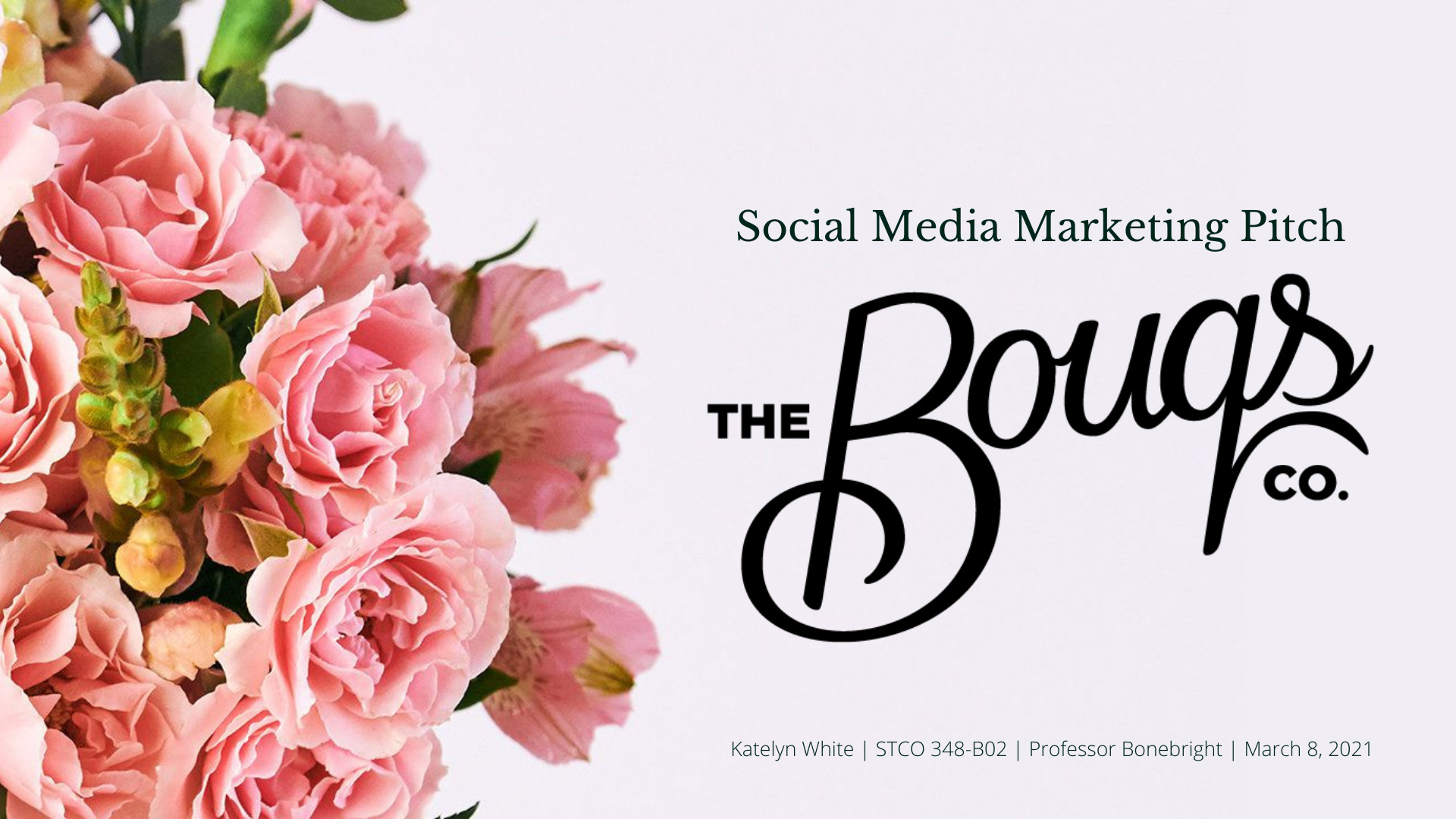
Social Media Marketing – The Bouqs Company
Katelyn
